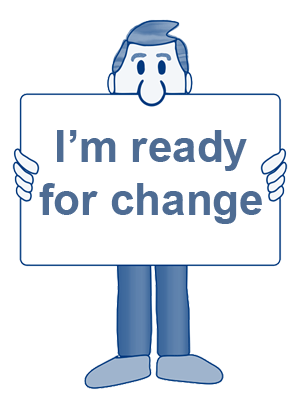In an earlier post, I covered the psychology of change as interpreted by Drs. Prochaska, Norcross, and DiClemente, all PhDs. It wasn’t my first introduction to the subject matter. I’d heard about it from a colleague at Vanguard Communications when he launched a company dedicated to this discipline.
 A former engineer and program manager with Bell Labs, Jeff Hiatt made the astute observation that superior technical solutions combined with expert project management proved insufficient to guarantee success. The missing ingredient was the “people side of change.” When people embrace and adopt change, things can go swimmingly. When they don’t, things can go awry.
A former engineer and program manager with Bell Labs, Jeff Hiatt made the astute observation that superior technical solutions combined with expert project management proved insufficient to guarantee success. The missing ingredient was the “people side of change.” When people embrace and adopt change, things can go swimmingly. When they don’t, things can go awry.
Since 1994, Jeff and his colleagues at Prosci have conducted research and developed best practices help people and their organizations embrace and adopt change. They provide “best in class” training and materials and partner with corporations, government agencies, and not-for-profits.
I mention Jeff’s work because the model he developed to support organizational change is equally relevant to personal change. It’s called ADKAR to reflect the 5 basic steps of effective change management:
Awareness represents an individual’s consciousness of a need for change and the risk of doing nothing. While there may be external drivers to create the impetus for change, the person needs a clear understanding of “what’s in it for me.”
Desire represents the willingness to move forward and make the change. In otrher words, the “what’s in it for me” is noteworthy enough to get on the priority list and motivate behavioral adjustments.
Knowledge represents the information and training necessary to make the change. It may include facts, systems, processes, skills, and behaviors.
Ability represents the capacity to turn knowledge into action. It’s more than well-intentioned activity; it implies a level of performance that will produce the desired results.
Reinforcement represents the internal and external actions, processes, rewards, recognitions, et al, that stoke the fires of change and keeping it going.
It’s easy to remember the acronym – ADKAR – and apply it to any situation. And it doesn’t take a fancy plan to put it into effect. Here’s an example from my household:
Awareness: My husband’s primary care physician was concerned about cholesterol and its potential for harm as my husband ages. The doctor wanted him to consider taking a statin.
Desire: We have friends who’ve taken statins and had unpleasant side effects. Our research on the drug did not evoke enthusiasm. So we opted to explore opportunities to lower cholesterol naturally.
Knowledge: We read several books on the whole food plant based diet and watched the Forks Over Knives video. These materials created a compelling case that a dietary shift could result in a substantive drop in our cholesterol.
Ability: I purchased several whole food plant based cookbooks and trained myself on meal planning and cooking without using meat, poultry, fish, dairy, or eggs. We also decided to cut way back on salt, sugar, and fat.
Reinforcement: We’re compiling a collection of delicious recipes that are just as satisfying (if not more so) than our prior eating habits. We both realized impressive drops in blood serum cholesterol which elicited praise from my husband’s physician.
In sum: If you’re a business manager who worries about change management for your organization, check out Prosci. If you aren’t ready to make that investment personally or professionally, try giving the model a test drive!